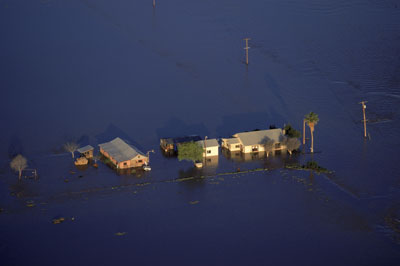Hurricane season 2009 in the Caribbean

Foto: © IPN STOCK
Based on expert forecasters, the hurricane season in 2009 will be less intense than in 2008. Every year, the hurricane season begins on June 1 and ends on November 30.
According to existing records, last year experienced one of the most active seasons in recent history. There were 16 tropical storms, of which 8 became hurricanes that caused at least 900 deaths, especially in Haiti, and destruction in Jamaica, the Dominican Republic, and Cuba.
The National Oceanic and Atmospheric Administration (NOAA) announced that it is expected that this year a minimum of 9 and a maximum of 14 tropical storms will develop, and between 4 and 7 of them could become hurricanes. There are two factors that might contribute to a decreased activity this year: the “El Niño” phenomenon and colder-than-normal water temperatures in the Atlantic. The “El Niño” phenomenon refers to an unusual warming of the Pacific Ocean and its presence weakens or prevents hurricanes from developing. According to a NOAA report, one out of three will be high-intensity hurricanes (categories three, four and five). The following are the names of the tropical systems that might emerge in the Atlantic:
Atlantic
- Ana
- Bill
- Claudette
- Danny
- Erika
- Fred
- Grace
- Henri
- Ina
- Joaquín
- Kate
- Larry
- Mindy
- Nicolás
- Odette
- Peter
- Rose
- Sam
- Teresa
Hurricane season 2009 in the Pacific

Foto: © IPN STOCK
The Pacific hurricane season officially began on May 15 and will end on November 30. These dates represent the period in which every year most tropical cyclones emerge in the Pacific Ocean. However, it is possible that these phenomena occur at any time throughout the year.
Based on the assessment of atmospheric and oceanographic conditions during 2008 —which included some abnormal ocean temperatures— and the analysis of a number of studies in previous years, the tropical cyclone season forecast for 2009 includes 16 tropical systems, of which 7 could become tropical storms, 5 moderate hurricanes and 4 high-intensity hurricanes. The names of the tropical systems that might emerge in the Pacific are:
Pacific
- Andrés
- Blanca
- Carlos
- Dolores
- Enrique
- Felicia
- Guillermo
- Hilda
- Ignacio
- Jimena
- Kevin
- Linda
- Marty
- Nora
- Olaf
- Patricia
- Rick
- Sandra
- Terry





